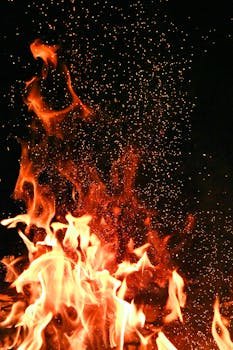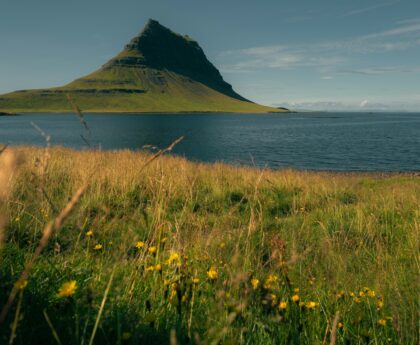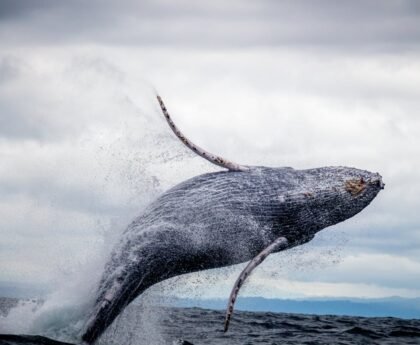Embarking on a solo bushcraft adventure in the Arctic is not for the faint-hearted. With freezing temperatures, limited resources, and the solitude of the wilderness, every moment is a test of resilience, skill, and creativity. Over the course of three days, I immersed myself in this challenge, building a survival shelter, crafting tools, and embracing the raw beauty of the Arctic. Here is a day-by-day recount of my experience and what it taught me about bushcraft and survival.
Day 1: Arrival and Shelter Building
The Arctic greeted me with its icy winds and a serene, white landscape that stretched endlessly. My first task was clear: build a survival shelter to withstand the harsh environment. With only a small axe, a folding saw, and some basic supplies, I ventured into the surrounding forest.
I decided on a quinzee-style snow shelter. This traditional shelter involves piling up snow, letting it settle, and then hollowing out the interior to create an insulated space. The first step was shoveling snow into a large mound, a physically exhausting task that required constant movement to stay warm. Once the mound was high enough, I inserted sticks at even intervals to guide the thickness of the walls during excavation.
While the snow settled, I gathered firewood. Arctic nights are unforgiving, and a reliable heat source was essential. Birch bark, known for its flammability even when damp, became my go-to tinder. I also collected dead branches and split larger logs to expose the dry wood inside.
After a few hours, I returned to the quinzee. Using my hands and the back of a saw, I carefully hollowed out the interior. The sticks served as a marker to ensure the walls remained thick enough to provide insulation but thin enough to allow light penetration. By nightfall, the shelter was ready. I lit a small fire outside, boiled water for a simple meal, and crawled into the shelter. The silence of the Arctic night was profound, broken only by the occasional howl of distant wolves.
Day 2: Blacksmithing and Tool Crafting
The second day began early, with the first rays of light illuminating the snow-covered landscape. My focus shifted to a secondary skill crucial for long-term survival: blacksmithing. Using a small portable forge I had carried in, I planned to craft basic tools that would aid my survival and future projects.
I set up the forge near a flat rock, which served as an improvised anvil. The forge was fueled by charcoal I had made during previous bushcraft adventures, supplemented with some wood from the forest. Using a hand-operated bellows, I stoked the fire until the metal I brought with me glowed red-hot.
My first project was a simple hook for hanging pots over a fire. I heated a steel rod and, with careful hammering, shaped it into a functional S-hook. This seemingly small tool added convenience and efficiency to my camp setup. Encouraged by the success, I moved on to crafting a crude knife. While far from perfect, it was sharp enough to process firewood, prepare food, and carve wood for other projects.
Between blacksmithing sessions, I kept the fire burning steadily and ensured my shelter remained intact. The Arctic weather is unpredictable, and any lapse in preparedness could be dangerous. As evening approached, I used my new knife to carve a wooden spoon and a small spatula, enhancing the minimalist kitchen I had improvised.
That night, I felt a deep sense of accomplishment. The tools I crafted weren’t just items; they were symbols of self-reliance and resourcefulness. They reminded me of the satisfaction that comes from creating something with your own hands, especially in such a challenging environment.
Day 3: Exploration and Reflection
On the third day, the weather shifted slightly. The sky cleared, and the sun cast a golden glow over the Arctic landscape. After two days of intense labor, I decided to explore the surrounding area and gather materials that could be useful for future projects.
The Arctic wilderness is a treasure trove of natural resources if you know where to look. I discovered a patch of willow trees, their flexible branches ideal for crafting snares or reinforcing shelter structures. I also stumbled upon an ice-covered stream, where I broke through the surface to collect fresh water. The sound of the rushing water beneath the ice was a stark reminder of nature’s power and adaptability.
As I wandered, I couldn’t help but reflect on the solitude of this experience. Being alone in such an environment forces you to confront yourself. There are no distractions, no conveniences, and no one to rely on but yourself. Every decision feels significant, and every success, no matter how small, is a testament to your effort and determination.
By the afternoon, I returned to camp to prepare for my departure the next day. I disassembled parts of the forge, packed up my tools, and ensured that my shelter would naturally break down without harming the environment. Leaving no trace is a fundamental principle of bushcraft and one I take seriously.
Lessons Learned
Surviving three days in the Arctic was a humbling and transformative experience. Here are the key lessons I took away:
- Preparation is Key: The Arctic demands meticulous planning. From tools and materials to understanding weather patterns, preparation can mean the difference between life and death.
- Adaptability is Crucial: Unexpected challenges will arise, whether it’s a sudden snowstorm or a broken tool. Staying calm and finding creative solutions is essential.
- Skills Trump Gear: While modern equipment is helpful, skills like shelter building, fire starting, and blacksmithing are invaluable. They empower you to adapt to your environment rather than rely solely on gear.
- The Value of Solitude: Being alone in nature is a powerful experience. It fosters introspection, resilience, and a deeper appreciation for the natural world.
Conclusion
Three days in the Arctic taught me more than any classroom or book ever could. It was a journey of self-reliance, creativity, and connection with nature. The challenges were immense, but the rewards were equally profound. Every fire lit, every tool crafted, and every meal cooked felt like a victory against the harshness of the wilderness.
For anyone considering a similar adventure, I encourage you to prepare thoroughly, respect the environment, and embrace the challenges with an open mind. The Arctic is as unforgiving as it is beautiful, and surviving its harsh conditions is a testament to the enduring human spirit. This experience reminded me that sometimes, the most profound growth happens when we step out of our comfort zones and into the wild.




